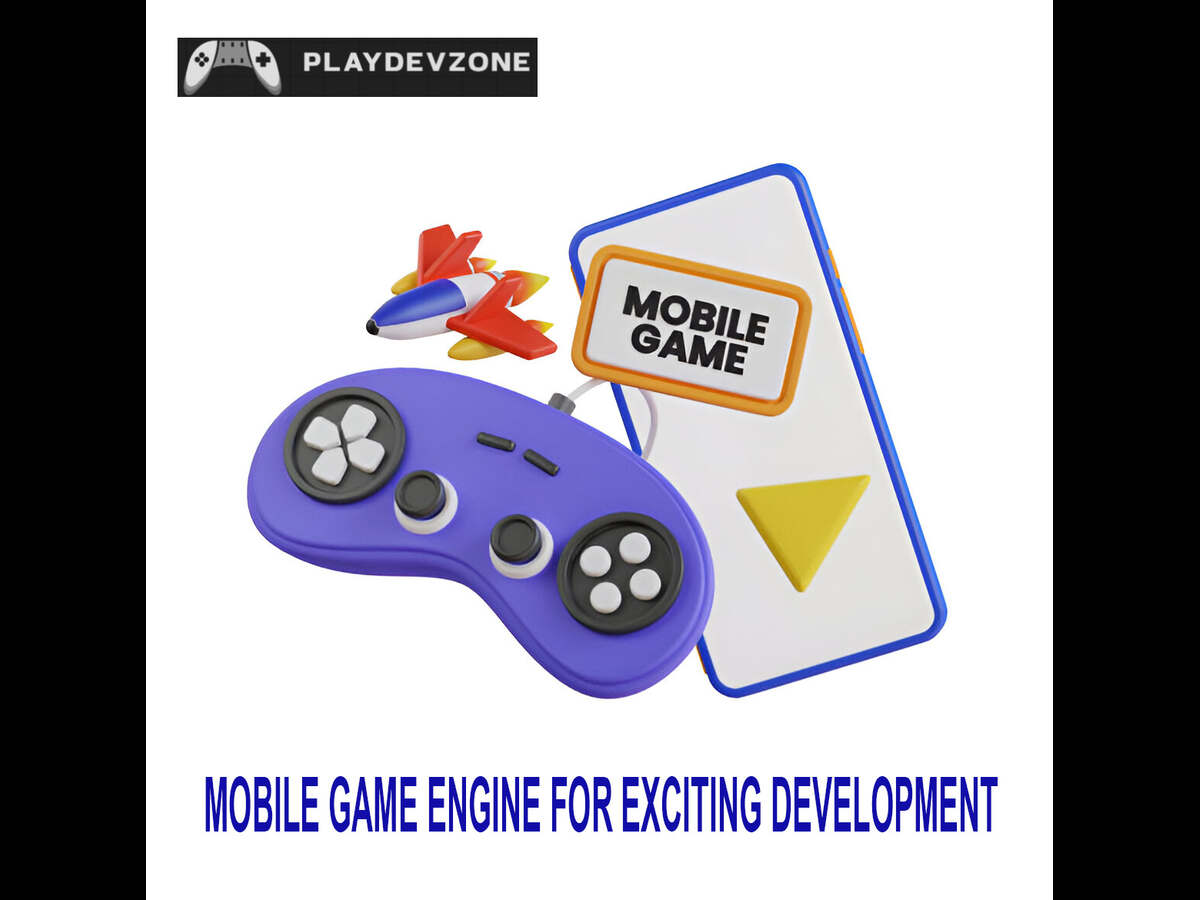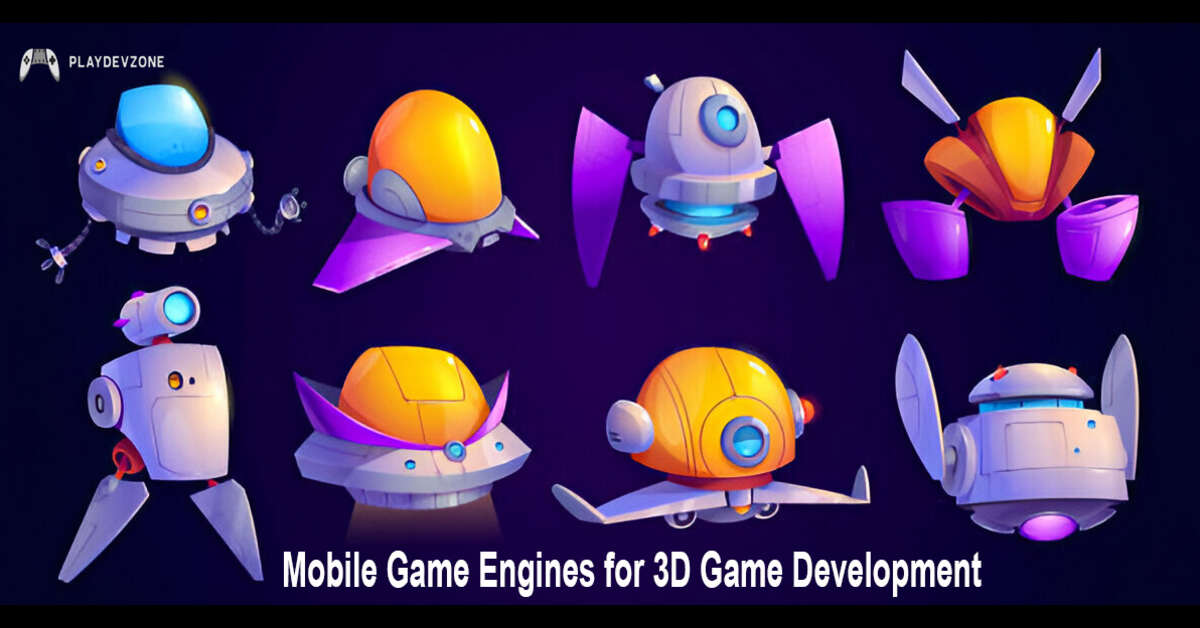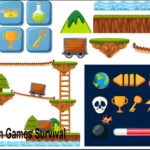3D mobile games have come a long way from basic polygonal models to immersive, console-quality experiences right in your pocket.
But behind every stunning visual, smooth animation, and responsive control lies one critical choice: the game engine.
With dozens of tools available, picking the right 3D mobile game engine can make or break your project’s success.

In this guide, we’ve handpicked 11 of the best mobile game engines for 3D development, whether you're building the next battle royale, crafting an open-world adventure, or experimenting with AR (Mobile Game Engines).
These engines offer powerful rendering capabilities, intuitive workflows, cross-platform support, and performance optimization tailored for mobile hardware.
What Makes a Great Mobile Game Engine for 3D Development?
Choosing the right mobile game engine for 3D development can make all the difference between a smooth, high-performance game and one that struggles to run.
A great 3D game engine must offer real-time rendering, efficient memory management, and mobile-optimized graphics pipelines. Ensuring cross-platform compatibility is crucial, particularly when developing for both iOS and Android.
Supporting multiple platforms not only broadens your audience reach but also enhances the overall accessibility and success potential of your game or application.
Built-in tools for physics, animation, lighting, and visual effects help streamline development, while an intuitive UI or visual scripting system can accelerate workflows for beginners.
Additionally, engines with large asset stores, strong community support, and detailed documentation make development faster and easier (Mobile Game Engines).
Whether you're building an action-packed shooter or a visually rich RPG, the engine you choose directly impacts performance, scalability, and the overall player experience.
Top 11 Mobile Game Engines for 3D Game Development
If you're looking to build 3D games for mobile platforms like Android and iOS, choosing the right engine is crucial.
Here are 11 powerful game engines that support 3D development and mobile deployment:
1. Unity
One of the most popular game engines in the world, Unity offers robust 3D capabilities, a massive asset store, cross-platform support (including iOS and Android), and support for AR/VR.
Perfectly suited for solo indie creators as well as large-scale development teams, offering flexibility and scalability for projects of any size.
2. Unreal Engine
Known for its cutting-edge graphics and photorealistic rendering, Unreal Engine is a top choice for high-end 3D mobile games.
It uses Blueprints (visual scripting) and C++, making it accessible yet powerful.
3. Godot Engine
Godot is a powerful open-source game engine designed to support both 2D and 3D development, offering a flexible and lightweight environment for creators of all experience levels (Mobile Game Engines).
With its intuitive scene system and custom scripting languages, it empowers developers to build polished games without the constraints of licensing fees.
While its 3D capabilities are still evolving, it offers a lightweight and modular architecture, with export support for mobile platforms (Mobile Game Engines).
4. CryEngine
Renowned for its visual fidelity, CryEngine is suitable for developers focused on creating visually immersive 3D mobile games (Mobile Game Engines).
Though more complex than some others, it offers powerful rendering tools.
5. Cocos Creator (Cocos3D)
While traditionally focused on 2D, Cocos Creator has grown to support 3D game development with Cocos3D. It’s lightweight and efficient, making it ideal for performance-optimized mobile games.
6. Buildbox
Buildbox is a no-code game engine that supports 3D game creation for mobile.
It’s perfect for beginners and indie developers looking to prototype or publish without writing code.
7. Defold
Defold is a streamlined, high-performance game engine known for its cross-platform capabilities and emerging support for 3D development.
Its lightweight architecture makes it an excellent choice for developers seeking speed, efficiency, and flexibility across a wide range of devices.
Built with performance and simplicity in mind, it provides developers with the tools to create responsive, multi-platform games without compromising speed or flexibility (Mobile Game Engines).
Designed for performance and efficiency, it enables developers to build and deploy games across multiple platforms with minimal overhead, making it an excellent choice for both 2D and emerging 3D mobile projects.
Its simplicity and low overhead make it a good fit for mobile platforms, especially for smaller 3D games (Mobile Game Engines).
8. Amazon Lumberyard
Built on CryEngine, Lumberyard offers AAA-level rendering and integrates seamlessly with AWS and Twitch.
While more suited to experienced developers, it supports mobile game deployment.
9. Torque 3D (Mobile Export)
Torque 3D, though older, still sees use among developers who want a customizable open-source engine.
It offers an intuitive visual scripting system, a high-performance rendering engine, and a dedicated development environment tailored for streamlined game creation and rapid iteration.
10. ShiVa3D
ShiVa3D is a lesser-known but capable 3D engine that supports deployment to Android and iOS.
It comes equipped with an intuitive visual scripting interface, a high-performance rendering engine, and a custom-built development environment designed to streamline the game creation process (Mobile Game Engines).
11. GDevelop (Experimental 3D)
Primarily a 2D engine, GDevelop has experimental 3D features under development. It’s open-source, beginner-friendly, and supports mobile export, making it worth watching for future 3D support.
How to Choose the Right 3D Game Engine for Your Project
Deciding on the right 3D game engine is a foundational step in game development, shaping everything from design possibilities to performance and platform compatibility throughout your project.
Start by identifying your goals: are you building a visually stunning RPG, a lightweight mobile game, or a cross-platform multiplayer experience?
Consider factors like ease of use, supported platforms (iOS, Android), graphics capabilities, performance optimization, and monetization tools. If you're a beginner, engines with visual scripting or low-code options may be ideal (Mobile Game Engines).
More advanced developers might prioritize access to the rendering pipeline or custom shader support. Don't overlook the importance of community support, documentation, and long-term updates.
The right engine should match both your creative vision and your team’s technical capabilities, setting you up for a smoother development journey.
FAQ (Frequently Asked Questions)
What engine should I use to make a 3D game?
The best engine for making a 3D game depends on your goals, experience level, and target platform.
Unity is a top choice for most developers due to its flexibility, massive asset store, and strong support for mobile and cross-platform development.
If you’re aiming for high-end visuals or console-quality graphics, Unreal Engine offers powerful rendering and visual scripting with Blueprints (Mobile Game Engines).
Beginners or indie devs may prefer Godot, an open-source engine with a lightweight 3D system and easy-to-learn scripting. For those who prefer no-code options, Buildbox can be a simple entry point into 3D game creation.
Ultimately, choose an engine that aligns with your technical skills, project complexity, and long-term development plans. Testing a few before committing is always a smart move.
How to make a game in mobile 3D?
Creating a 3D game for mobile begins with selecting the right game engine. Popular options include Unity, Unreal Engine, and Godot.
These platforms offer tools for building 3D environments, adding animations, and coding gameplay mechanics.
Start by planning your game concept, designing basic models or importing assets, and building your first scene. Use built-in physics engines and scripting (like C# in Unity or GDScript in Godot) to bring interactions to life.
Once your game is functional, optimize it for mobile devices by compressing textures, managing memory usage, and adjusting lighting (Mobile Game Engines).
Conduct thorough testing on both Android and iOS devices to ensure optimal performance and a seamless user experience.
Once your game is polished, integrate any necessary monetization features, and proceed with publishing to the respective app stores. With the right tools and a clear plan, making a mobile 3D game is both accessible and rewarding.
Can AI create a 3D game?
Yes, AI can assist in creating a 3D game, but it doesn’t fully replace human developers, at least not yet.
AI tools can generate 3D models, textures, animations, dialogue, and even game code, dramatically speeding up development.
Platforms like Unity and Unreal Engine are increasingly integrating AI-driven features such as procedural content generation, intelligent NPC behaviors, and real-time environment creation (Mobile Game Engines).
Additionally, AI-powered tools like ChatGPT, Scenario, and Promethean AI help automate scripting, level design, and art asset production.
However, while AI can handle repetitive and creative tasks, human input is still essential for game design, storytelling, and quality control.
So, AI can create parts of a 3D game, and even help build functional prototypes—but for now, it works best as a creative partner, not a full replacement.
Can AI replace 3D?
AI cannot fully replace 3D, at least not in the way we currently understand it. Instead, AI enhances and accelerates 3D content creation.
It can generate 3D models, textures, animations, and environments with impressive speed and realism, reducing the time and skill traditionally needed.
Tools like NVIDIA’s GAN-based generators, Adobe Firefly (3D to image), and AI-assisted 3D modeling software are transforming workflows.
However, 3D design still relies heavily on artistic direction, storytelling, and interactivity areas where human creativity remains essential.
Rather than replacing 3D, AI is evolving as a powerful tool that supports 3D artists and developers, making processes faster, more scalable, and more accessible. In short, AI is reshaping 3D, not replacing it.
What engine is GTA 6 using?
GTA 6 is currently in development using Rockstar Games' enhanced proprietary engine, RAGE 9 (Rockstar Advanced Game Engine), offering next-level performance, visuals, and realism tailored for the next generation of gaming.
This is an enhanced version of the engine used in GTA V and Red Dead Redemption 2, built to deliver next-gen realism and performance (Mobile Game Engines).
RAGE 9 is expected to include cutting-edge features like real-time ray tracing, dynamic weather systems, advanced AI behaviors, and procedural environment generation, all designed to create a more immersive open-world experience.
While Rockstar hasn’t officially released full engine specs, insider reports and leaks suggest GTA 6 will showcase the most technically advanced version of RAGE yet (Mobile Game Engines).
This upgrade will push the boundaries of physics, lighting, and interactivity across platforms like PlayStation 5, Xbox Series X|S, and PC, setting a new benchmark for open-world gaming.
Conclusion
With the mobile gaming industry more competitive than ever, selecting the right 3D game engine can be the key to standing out.
The 11 engines we’ve explored each offer unique strengths, whether you’re after photorealistic visuals, no-code simplicity, or open-source flexibility.
From industry giants like Unity and Unreal Engine to agile platforms like Godot and Defold, there’s a tool suited for every skill level and project type.
The best engine for your game ultimately depends on your goals, experience, and target audience (Mobile Game Engines).
Take time to experiment, prototype, and evaluate performance on real devices.
The right choice won’t just speed up development, it’ll shape the quality and potential of your final product.











